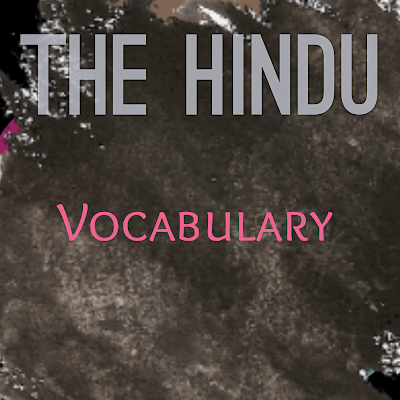NCERT class 6 history notes (chapter 6)
NCERT Class 6 History notes
Chapter 6 -"KINGDOMS,KINGS AND EARLY REPUBLICS"
In this chapter of class 6 NCERT we are gonna learn about the development of from tribe to people and from forest to Janpads (states).
-- Rajas: The rajas that performed these big sacrifices were now recognised as being rajas of janapadas rather than janas.
-- Janapadas: The word janapada literally means the land where the jana set its foot, and settled down.
-- Archaeologists have excavated a number of settlements in these janapadas, such as
Purana Qila in Delhi, Hastinapur near Meerut, and Atranjikhera.
-- They made earthen pots. Some of these were grey in colour, others were red.
-- One special type of pottery found at these sites is known as Painted Grey Ware.
-- As is obvious from the name, these grey pots had painted designs, usually simple lines and geometric patterns.
-- Mahajanpadas: Some janapadas became more important than others, and were known as mahajanapadas.
-- Most mahajanapadas had a capital city, many of these were fortified. This means that huge walls of wood, brick or stone were built around them.
-- Forts were probably built because people were afraid of attacks from other kings and
needed protection.
-- It is also likely that some rulers wanted to show how rich and powerful they were by
building really large, tall and impressive walls around their cities. Also in this way, the land and the people living inside the fortified area could be controlled more easily by the king.
--Building such huge walls required a great deal of planning.
-- Thousands, if not lakhs of bricks or stone had to be prepared.
-- This in turn meant enormous labour, provided, possibly, by thousands of men, women and children. And resources had to be found for all of this.
-- The new rajas now began maintaining armies. Soldiers were paid regular salaries and maintained by the king throughout the year. Some payments were probably made using punch marked coins.
-- Taxes: As the rulers of the mahajanapadas were, building huge forts and maintaining big armies,they needed more resources. And they needed officials to collect these.
-- Taxes on crops were the most important. This was because most people were farmers.Usually, the tax was fixed at 1/6th of what was produced. This was known as bhaga or a share.
-- There were taxes on crafts persons as well. These could have been in the form of labour.
-- Herders were also expected to pay taxes in the form of animals and animal produce.
-- There were also taxes on goods that were bought and sold, through trade.
-- Hunters and gatherers also had to provide forest produce to the raja.
-- Agriculture: There were two major changes in agriculture around this time.
One was the growing use of iron ploughshares.
-- This meant that heavy, clayey soil could be turned over better than with a wooden ploughshare, so that more grain could be produced.
--Second, people began transplanting paddy. This meant that instead of scattering seed on the ground, from which plants would sprout, saplings were grown and then planted in the fields.
-- This led to increased production, as many more plants survived.
-- Generally, slave men and women, (dasas and dasis) and landless agricultural labourers(kammakaras) had to do this work.
-- Magadha (Kingdom): Magadha became the most important mahajanapada in about two hundred years.
-- Many rivers such as the Ganga and Son flowed through Magadha.
-- This was important for
(a) Transport,
(b) Water supplies
(c) Making the land fertile.
-- Parts of Magadha were forested. Elephants, which lived in the forest, could be captured and trained for the army.
-- Forests also provided wood for building houses, carts and chariots. Besides, there were iron ore mines in the region that could be tapped to make strong tools and weapons.
-- Magadha had two very powerful rulers, Bimbisara and Ajatasattu, who used all possible means to conquer other janapadas.
-- Mahapadma Nanda was another important ruler. He extended his control up to the north-west part of the subcontinent.
-- Rajagriha (present-day Rajgir) in Bihar was the capital of Magadha for several years.
Later the capital was shifted to Pataliputra (present-day Patna).
-- More than 2300 years ago, a ruler named Alexander, who lived in Macedonia in Europe,wanted to become a world conqueror. He didn’t conquer the world, but did conquer parts of Egypt and West Asia, and came to the Indian subcontinent, reaching up to the banks of the Beas. When he wanted to march further eastwards, his soldiers refused. They were scared, as they had heard that the rulers of India had vast armies of foot soldiers, chariots
and elephants.
-- Vajji (Kingdom): Vajji, with its capital at Vaishali (Bihar), was under a different form of government, known as gana or sangha.
-- In a gana or a sangha there were not one, but many rulers.
--Sometimes, even when thousands of men ruled together, each one was known as a raja. These rajas performed rituals together.
-- They also met in assemblies, and decided what had to be done and how, through
discussion and debate.
-- However, women, dasas and kammakaras could not participate in these assemblies.
-- Both Buddha and Mahavira belonged to ganas or sanghas. Some of the most vivid
descriptions of life in the sanghas can be found in Buddhist books.
-- Rajas of powerful kingdoms tried to conquer the sanghas. Nevertheless, these lasted for a very long time, till about 1500 years ago, when the last of the ganas or sanghas were conquered by the Gupta rulers.


Comments
Post a Comment